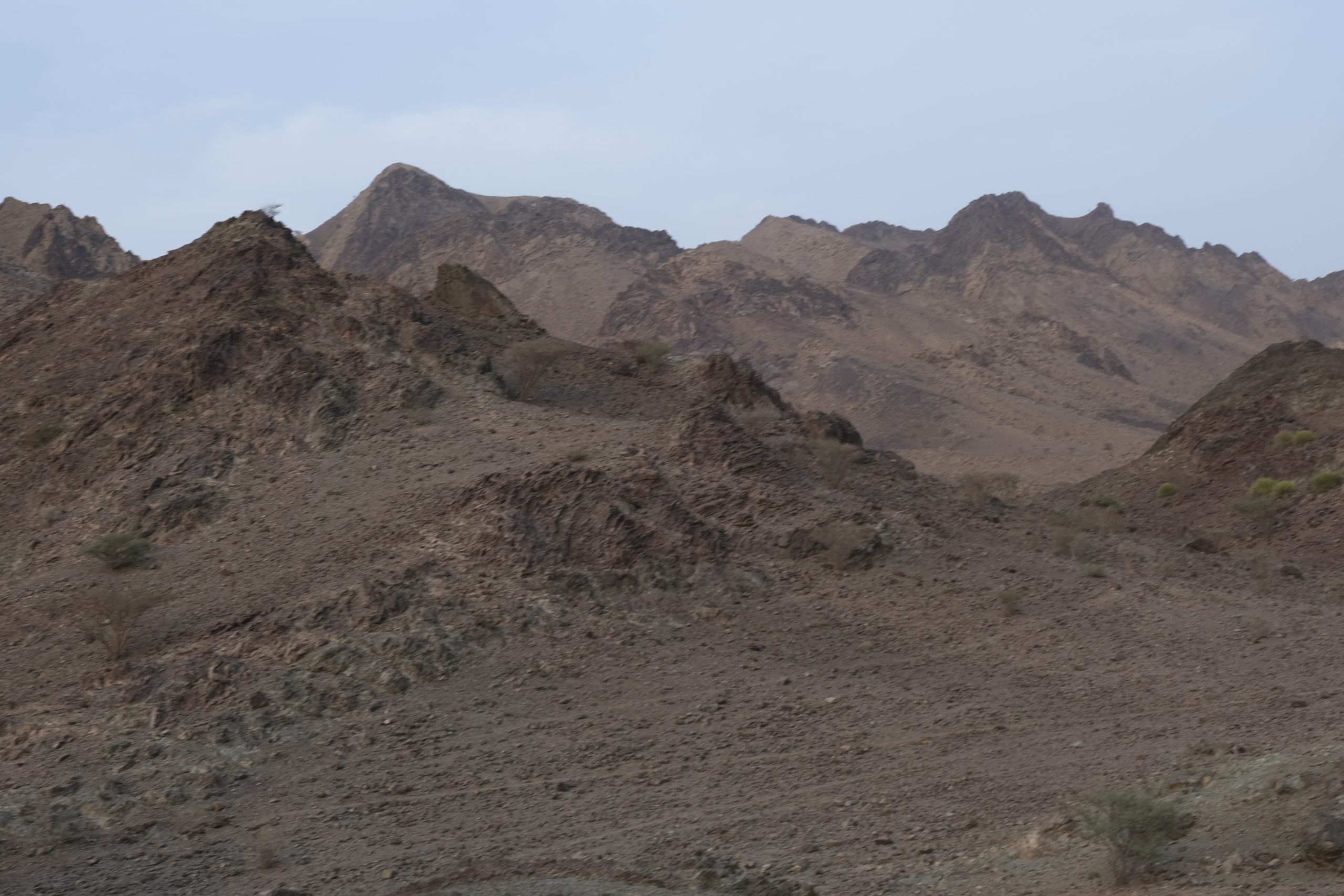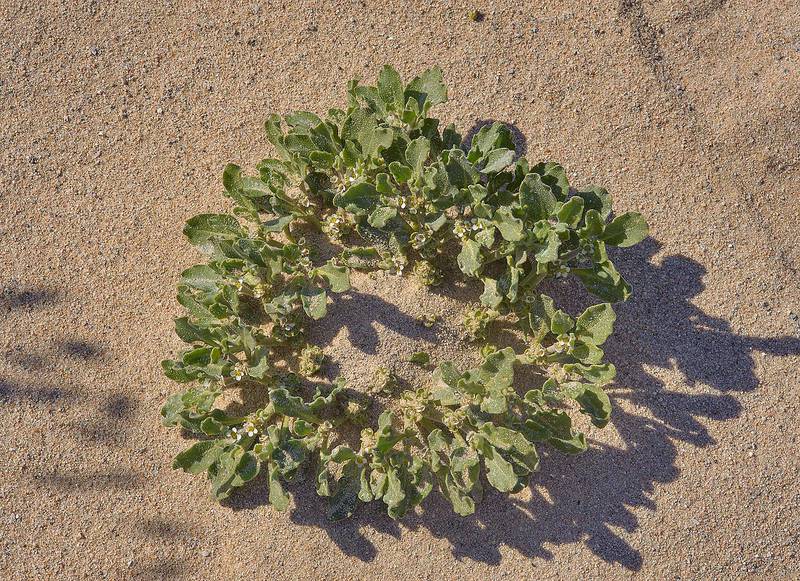Accessibility
Black & White
High Contrast
Text Size
Cursor Size
Botanist at Natural History and Botanical Museum EPAA, Sharjah, UAE
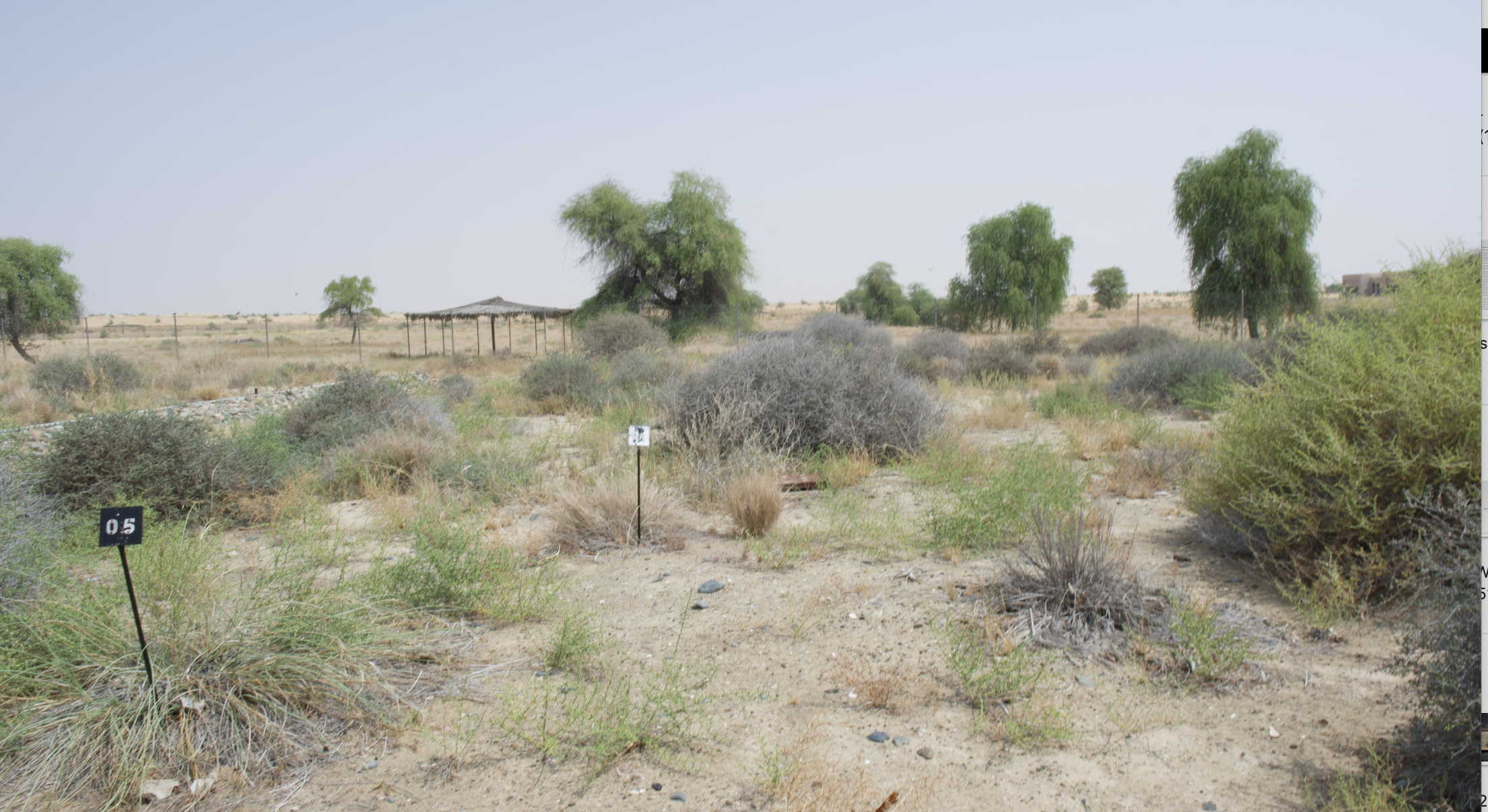
Rupali Karnik
Rupali Karnik has been a botanist at the Natural History and Botanical Museum as pat of the Environment and Protected Areas Authority in Sharjah.
The museum explores the study of plant life through its interactive displays and learning how important trees, bushes, grasses, herbs, algae and fungi are to us, in so many ways in everyday life. The journey through time in which plants have evolved, adapted and survived to become not just part of our landscape but essential elements of our existence.
NEK: How long have you worked at the Sharjah Natural History and Botanical Museum?
Rupali Karnik: It’s been almost ten years now, a decade. I have been part of the team for a while, conserving and caring for our outdoor garden and native species. Let me show you around our outdoor gardens. This plant is called Agool (Alhagi graecorum) in Arabic. If you try to break the plant, you’ll find a watery substance oozing out from it. It’s very sweet actually, so it was used as a sugar substitute. Have you ever heard of manna? It’s a type of sugar made from the manna tree or camel thorn (Alhagi maurorum). It also used to be used as a laxative by the locals.
NEK: Is it still used today?
RK: Yes, by Bedouins mostly. They still use it as a laxative.
NEK: It seems to grow in a rocky kind of environment. Does it also grow in a sandy environment?
RK: It grows between rocks, actually. As you can see, they’re growing in the rocks. But it is not exactly gravel. They need a little soil, too. There’s one more important medicinal plant which we need to have over here. It’s called Handal. It’s latin name is Citrullus colocynthis from a melon family. It’s a small round melon. The plant is very important because of its seed but the fruit is poisonous. But the amazing part are the seeds which are bitter and are used as a diabetic medicine. Not only do local people but all people use it. You have to put four seeds and soak them in the water overnight. The next morning, you have to throw the seeds and drink the water.
NEK: But it’s very dangerous to eat the fruit or to touch it or anything.
RK: You have to clean the seeds completely, separate them from the fruit, and clean them well. But you have to be very careful to remove it correctly because the flesh of the fruit is very poisonous. There has been a case of someone who ate it and became paralysed.
Dawn Ross: Do these plants get much bigger than they are now?
RK: When they grow bigger they look like a bush and they have beautiful red flowers, so pretty.
NEK: Do animals eat them, as well?
RK: No, because they are very thorny.The next plant I would like to introduce you to is called [cyphers tangalooma rattus], also called Rasha in Arabic. Bedouins use this plant primarily for making ropes and small baskets. It’s similar to how to date leaves are used, but with Rasha leaves, you can make small, thin ropes and smaller baskets.
NEK: Do animals eat it, as well?
RK: Yes, goats and camels mostly. Thor or Dhafra with the latin name Tephrosia Apollinea is another very important plant that has been used by the locals. The plants’ leaves can be removed, dried, and turned into powder form, which is then inserted in camels’ ears to remove ticks. This is how locals treat camels’ ticks.
DR: Is it also used for medicinal purposes?
RK: The locals don’t ingest it, but animals do eat it. If you talk to the locals also, they’ll tell you ways in which they have used it but there are no records of that anywhere. They also eat the Ghaff tree (prosopis cineraria) leaves by adding them to salads. I don’t usually tell people to take it as medicine because I haven’t used it as medicine myself. Like some are used like fumes, that’s fine. You could inhale some of the fumes, it’s not harmful, whereas ingesting it could be.
This is another very important one tree spefcies called a Sidr (Ziziphus spina-christi). Its leaves can be boiled in water, which then becomes like a natural moisturizer for skin or hair. You could also eat the berries that the tree bears, it’s completely safe.
DR: Are the berries sweet?
RK: Yes, and they’re very delicious. They’re a special treat, especially back in the olden days, when people didn’t always have much.
NEK: There is also the Sidr honey.
RK: Yes, correct. It is also mentioned in the holy Quran in the Sidrat al-Muntaha.
RK: This tree right next to it is actually called Rahel or Atriplex halimus, but it’s not local.We are just using it here as decoration. Next to it is another important species called Moringa peregrina. The moringa tree is very important. Local people use its young seeds in their food. Moringa powder is very rich in vitamins and antioxidants, so they also grind the leaves to make powder, and add it to food or even tea. It is considered to be a medicine as it is full of nutrients and vitamins. It’s a tall plant, and its flowers are very beautiful.
Next to it is Salvadora Persica, also called Al raq or miswak in Arabic. Its root is used as a natural toothbrush because it’s high in calcium. Before we had toothbrushes, locals used this plant’s roots to brush their teeth. The berries also have a beautiful red colour; they look like small grapes and are edible.
DR: Are the berries the size of a grape?
RK: They’re smaller, more like small cherries, red-colored and delicious, though also slightly bitter.
NEK: Are any of these plants consumed by both humans and animals?
RK: Yes, many of these are used by both. Also, let me introduce you to this one. This is called Rhazya stricta, or Harmal in Arabic. Harmal is very important because the fumes are inhaled to relieve asthma. Locals dry the leaves and inhale the fumes to help relieve from asthma. Remram (Heliotropium kotschyi) is used in a similar way. Its leaves are dried and burned, and its fumes are then inhaled.
DR: Birds have quite a few nests, I see.
RK: Yes. That’s because the weather is quite warm now. You won’t find as many birds’ nests when the temperatures cool down.
DR: This is quite lovely, with all of the animals. It’s like an entire ecosystem. Is the animal reserve behind these?
RK: Actually, we have a zoo over here. Animals that are a little sick or unwell are separated from the rest.
NEK: They have the breeding centre here as well.
RK: Up next is a Pulicara glutinosa, another very important plant. It’s called Mohtadi in Arabic.
DR: It looks like it doesn’t have flowers.
RK: This plant has a yellow colour, but its flowers have shed. This plant’s leaf extract is used to and treat headaches. The leaves are boiled, and the water is rubbed on the forehead to help ease the pain.
DR: So, it’s more of a shrub; it doesn’t get much bigger? RK: No, it’s about this size almost anywhere.
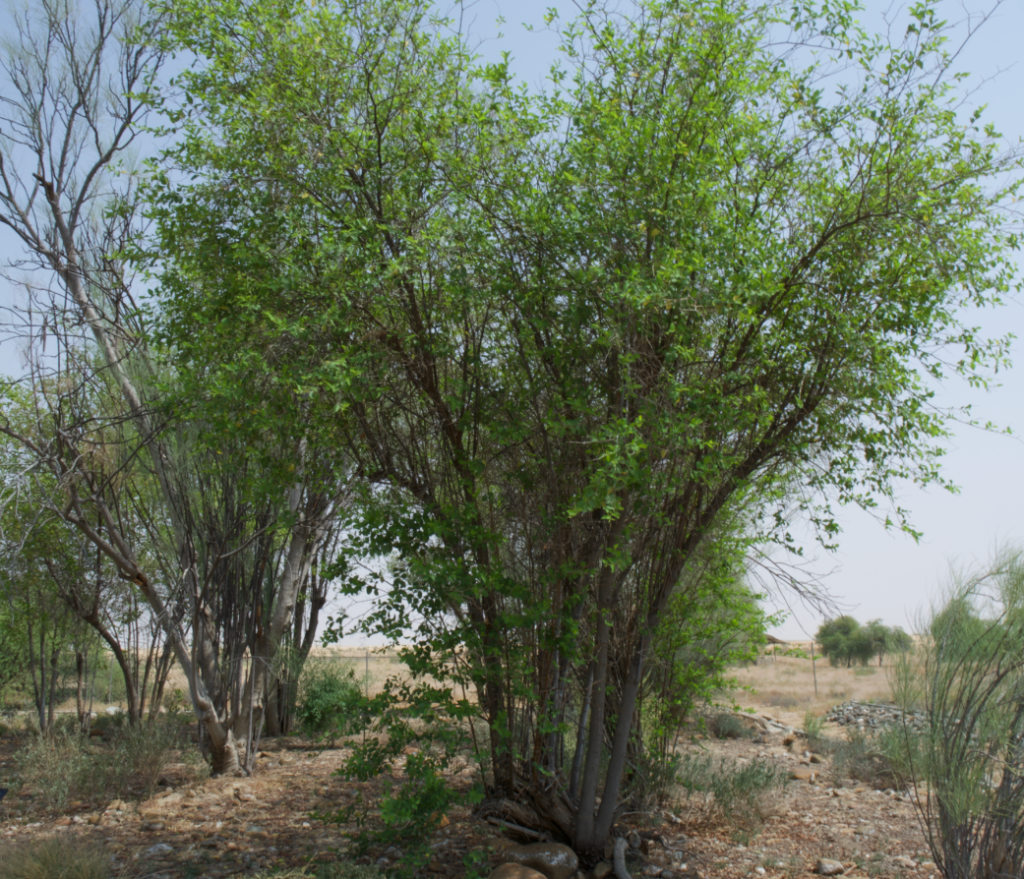
NEK: How long does it take to get to this size?
RK: It takes around three to four years. It has a very slow growth. And it’s a very delicate plant; it’s one of the most difficult plants to grow and maintain. You’ll find it everywhere in the wilderness, but when you bring it in and try to propagate it, try to plant it, it’s the most difficult of all the plants. It can be a real struggle to keep them alive.
NEK: And is this because of its seeds, or because it needs, very specific conditions to thrive?
RK: Good question; it’s because of the seed. In fact, this plant doesn’t produce many seeds. It might seed one year, and not at all the next. That’s the main issue. The flowers are yellow and small like pine nuts; the leaves are green. It’s very beautiful plant.
NEK: Is it found in sandy dunes?
RK: You’ll find it in gravel plains, mostly. There are about 50-60 species around here. That’s a significant figure.
NEK: I heard that they were used to build walls. It’s interesting to think of the use of plants in vernacular architecture.
RK: This species here is Euphorbia larica, also called Esbach in Arabic. If you cut through it, a milky white substance would come out. This milky liquid is very sticky. Natives used it mainly to hunt small birds, which they would then cook and eat. They would cut the top part of the plant, and this milk would ooze out. Then, the birds would sit on these and basically be glued to them, allowing the people to grab them. That’s how they hunted small birds.
NEK: What is this?
RK: This is al raq, again. This is a wonderful plant because it comes in so many different sizes. It can be a bush or a tall tree. And what’s great about it is that you can cut it however way you want and shape it into anything, making it perfect for landscaping. It’s a very flexible plant.
DR: It looks quite hardy.
RK: Another important plant is called Arta in Arabic (calliconum comosum) . It’s not flowering now, but when it is, it’ll have beautiful, white, woolly flowers. It’s like having cotton everywhere.
NEK: This is what they make pillows from?
RK: Yes. It’s stuffed into pillows and can also be used like a bandage. It’s very similar to cotton, and it has similar uses to cotton. It’s called the local cotton tree, actually. This is also a very important plant called Henna (). Its leaves were used to make dyes. They would boil the leaves and place a white cloth in the water, and it would be dyed green because that’s the kind of pigment that the leaves would release. It’s called a dye-making plant.
DR: And would this have been eaten by animals, as well?
RK: No, it is used for making dyes.
NEK: I have a question about the way in which these gardens are made. How did ou work on the design on the garden?
RK: This garden is quite old, it’s been here since 1995. Nobody from our current team was around when it was designed.
DR: So, there wasn’t any strategic kind of placement?
RK: I have heard that Dr. Cullen Gandini was involved. He was an Egyptian doctor who emigrated to Australia, but nobody knows where he is now. He was also a botanist, and he went to different locations, and brought the plants. He even got the soil from those locations. He made 10 locations with two each. That is how the garden came to be. And we’re very new here, so we’ve been adding new plants, but he was the one who started it. So it was his idea to have this kind of garden. These four areas are from the sea sand, which is from the [Sita Hamriyah] coast.
This, here, is a very important plant called [Tamarix orocarina], also called Starpha in Arabic. This plant grows in coastal areas.It holds the waves, almost like sea-soil, and it acts a barrier for the waves. It’s also called the salt plant. Its leaves absorb so much salt water, so when they’re dried, their texture will be grainy from the sea salt.
NEK: And it’s used in traditional cooking?
RK: Yes, it is.
NEK: And how long does it take to grow to this size? Is this an old plant, for instance?
RK: Because I’ve seen so many others, I can tell that this is actually the plant’s mature, adult size.
NEK: So most of the bigger fields here were planted in 1995, at the very beginning.What I understand is that you recreated the different ecosystems of the UAE
.RK: Yes,you can see here plants that grow in different ecosystems from mountain and wadis to plain and sand sheet, coastal areas and the sea. You should come back in the cooler months and spend more time with each plant, and most will be blooming – plant start blooming from November up until March and by April we would have collected all the seed for our seedbank and propagation.
Grewia Tenax
الخزم
Khazim mainly grows in the Fujairah region. The plant is used as fodder for animals, and birds are attracted to the sweetness of the plant. Khazim is also consumed as a tea to treat low hemoglobin levels.
Khazim
الخزم
Khazim (Grewia Tenax) mainly grows in the Fujairah region. The plant is used as fodder for animals, and birds are attracted to the sweetness of the plant. Khazim is also consumed as a tea to treat low hemoglobin levels.
Al Hamra/(Kahal)
حشيشة الأرنب (أو كاحل)
Al Hamra (Arnebia hispidissima) is usually found between the sandy soil plains of Ras al Khaimah and Dubna, Fujairah. The roots of the plant were used as a dye for clothes, as well as treated fevers by boiling the roots in water, and drinking as a tea. Its flowers and leaves are also loved by grazing goats.
Kaff maryam
كف مريم أو شجرة العوار أو القشعة (عشبة الرهبان\شجرة إبراهيم\أصابع العذرا\شجرة العفة\عشبة المدينة)
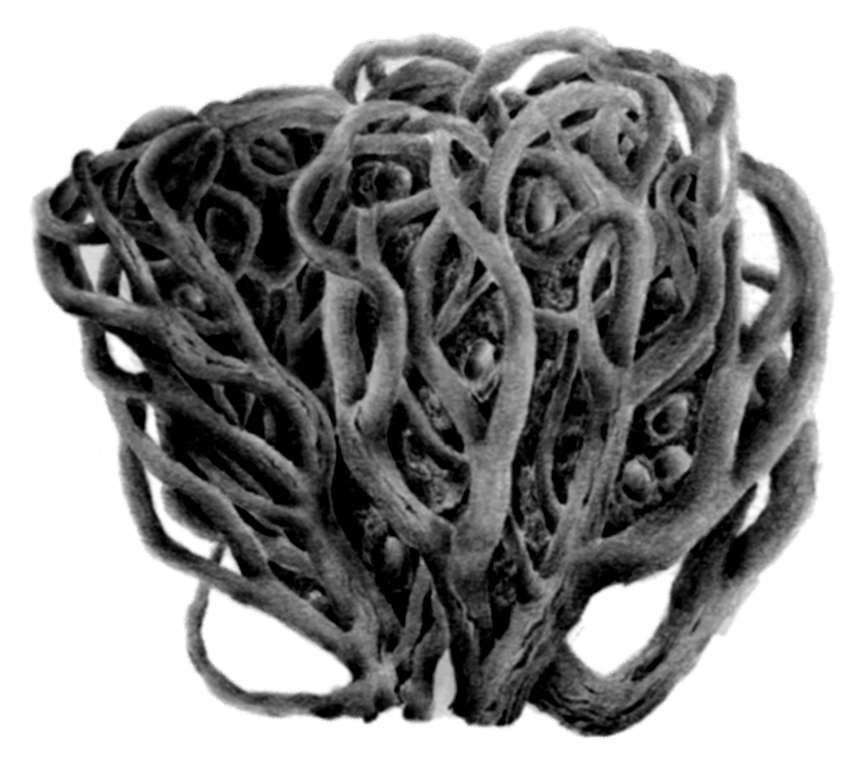
Flowering between February and April, Kaff Maryam (Anastatica Hierochuntica) grows throughout the Arabian Peninsula in dry, sandy and silt wadi beds. The plant is easy to identify when it’s dry as the curled branches resemble a clenched fist. The dried stems unfurl when soaked in water producing a tonic that provides several medicinal uses for pregnant women, including increasing milk supply, prevention of early miscarriages, balancing the body’s hormones, aiding the muscles of the uterus and reducing labour pain. It also increases fertility in women and reduces menstrual pain. Many folk stories surround Kaff Maryam, including the story of Mary clenching the plant in her hand when giving birth to Jesus.
Thor
الظفر
Thriving in the valleys and mountains of Fujairah; goats, humans and birds are drawn to Thor (Tephrosia Appolonea) shrub for its seeds. People consume the seeds when they are still tender and birds consider this shrub as a safe haven for building nests.
Ghillih
أم لحلاح أو غلّ
Ghilih (Dyerophytum indicum) is a plant loved by humans and goats. Humans use the salty leaves as a seasoning for salads, and the fruits are eaten by goats.
Baql
الباقل
Baql (Rhynchosia minima) was once used as a substitute for coffee and is a common plant that grows across all parts of the UAE. It is also used in salads and as a garnish.
Khansour/Yadaa
الخنصور أو اليضع
Khansour/Yadaa (Desmidorchis Arabica) is mainly found in the high mountain ranges of the UAE. It often finds its way into Al Saloona, a meal eaten with rice, and the leaves are often added to salads. The plant also has medicinal properties, believed to help with diabetes. Commonly found with red blooms, the yellow bloom variant of this plant is now considered rare.
Hommed
الحميض
With a tang of sourness, Hommed (Rumex Vesicarius) is a plant loved by communities living around Ras Al Khaimah and Umm Al Quwain, especially when the plant starts blooming after the rain. Mostly eaten as a salad, this plant has two varieties – one which grows in the mountain or rocky areas and the other that grows in the sandy plains, difference only in colour and shape.
Markh
المرخ
Commonly widespread across the UAE, the tender leaves and flowers of Markh (Leptadenia Pryotechnica) were often used in different food preparations. Markh was also used to make rope and fishing tools. At the same time, it is a highly grazed plant by goats and other desert animals.
Maqarnah/Dahma
المقرنة أو دهمة
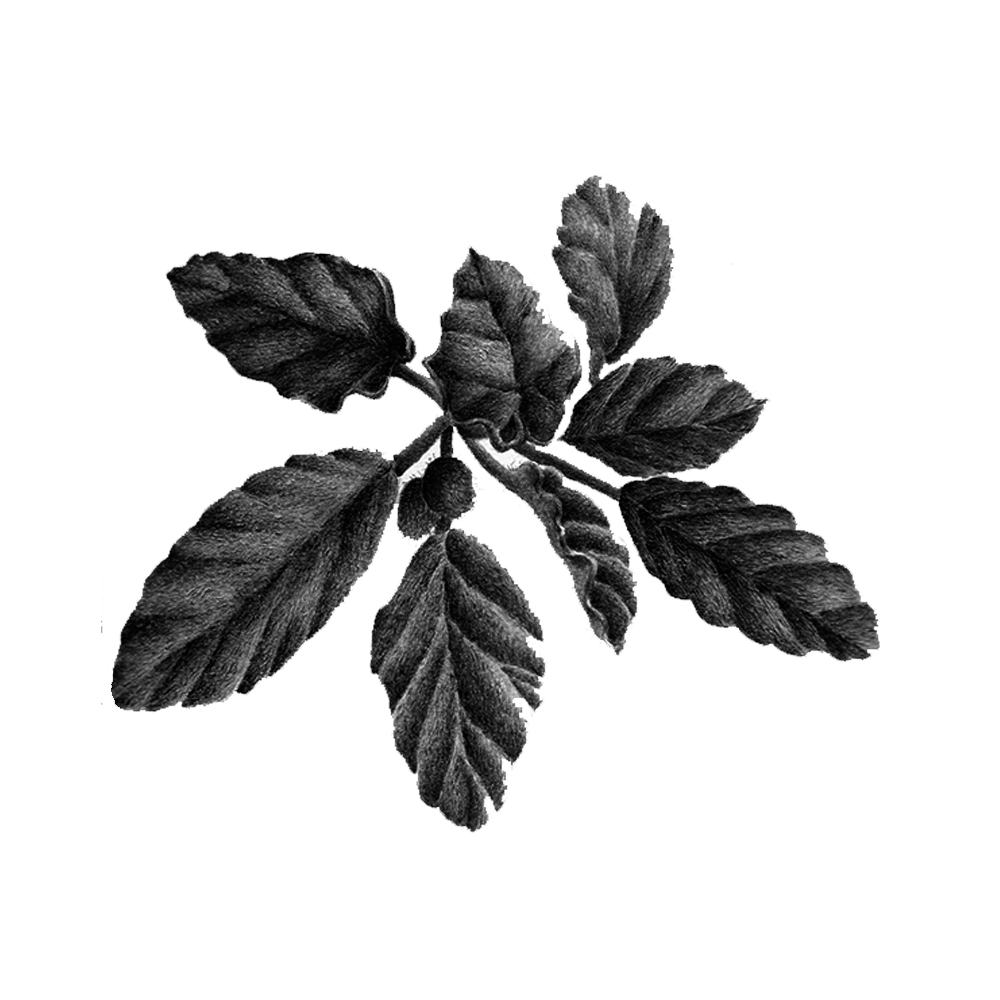
A small shrub that mainly thrives on sandy plains, Maqarnah (Monsonia Nivea) is often drunk as tea, prepared by drying the leaves and taken as a cure for fevers. Goats are drawn to the plants when they start producing flowers in January.
Sakhbar
الصخبر

Sakhbar (Cymbopogon commutatus) produces an oil that has a strong aromatic smell, and medicinal properties that protect against fever and is used as a diuretic when consumed as a tea.
Felh/Shaflah/Lasaf/Malat
الفِلح أو الشفلح أو اللصف أو شوك الحمار (القبار\الكبار\شرش القبار\ السَدير\عصلوب)
Humans and goats are drawn to Felh (Capparis Spinosa) at sunset, when the flowers open up and start blooming. The leaves of the plant are added to salads, and the flowers are used for preparing jam. The flowers are also known to relieve tooth pain.
Al-Raq/ِAl-Araq/Meswak
الراك أو الأراك أو المسواك
The roots of Al Raq (Salvadora Persica) continue to be used as a natural toothbrush in some parts of the UAE. It is a very important plant for goats and camels as it helps the animals produce milk, and gives their milk a high vitamin content.
Mohtadi
المهتدي

Mohtadi (Pulcaria Glutinosa) is used in perfumes and tea. It is also mixed with other leaves and salt to produce an ointment that is applied to wounds.
Rimth
الرمث
People in some parts of the UAE dry and grind Rimth (Haloxylon salicornicum) to add to boiling water as a tea, which is believed to be highly medicinal in nature. Goats also graze upon its spindly stems.
Seedaf
سيداف
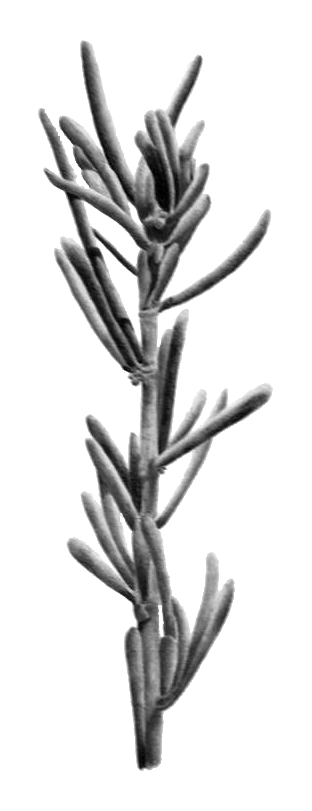
Usually found across the wadis of the UAE, Seedaf (Pteropyrum Scoparium) grows in the winter, and the leaves are often added to salads.
Khobez
الخُبيز
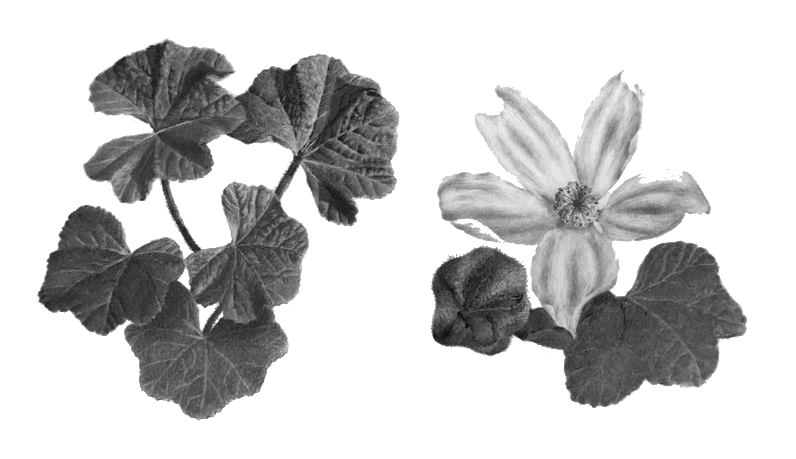
Khobez (Malva Parviflora) can be found throughout the UAE and is known to have a strong smell in the evenings. The leaves are boiled to make tea and added to salads. Khobez helps relieve stomach pain and cleanses the body.
Jadaa
الجعدة
A perennial aromatic plant that thrives in the mountain regions of the UAE. Characterised by different coloured flowers, Jadaa (Teucrium Polium) continues to be used in tea, sometimes as a replacement for mint and as medicinal concoctions for treating stomach pain (after being dried and mixed with either milk, water or juice). Traditionally, some of the flowers were used to make pillows as they remain fluffy with a mild fragrance.
Sobber
التمر الهندي
Sobber (Tamarindus Indica) grows widely in the mountainous regions of the UAE and is moderately tolerant to salt. It is often used as an ornamental tree in gardens and landscaping, and produces edible fruit. Goats also enjoy eating its leaves and fruits.
Ghoban/Sawas (Hindab/Attfa/Hallab)
الغوبان أو السواس
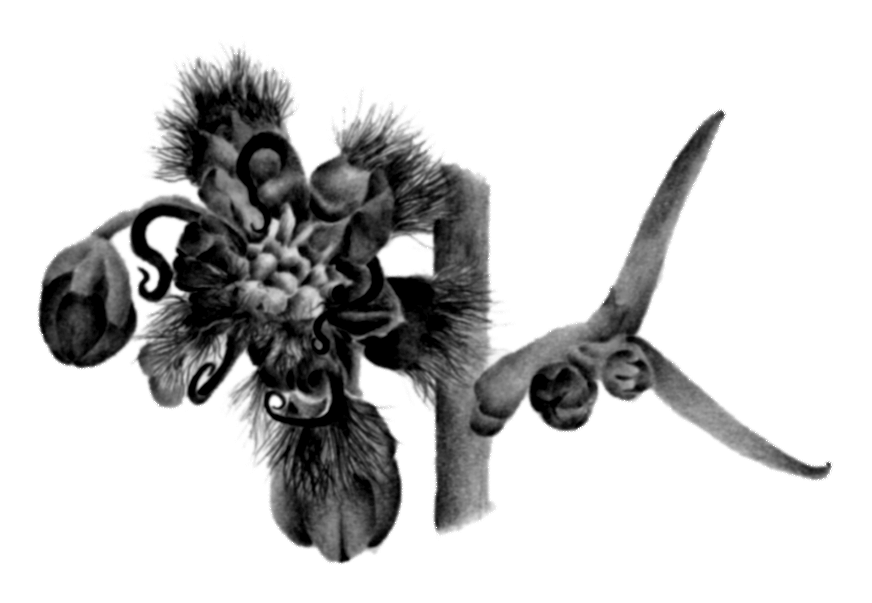
Ghoban (Periploca Aphylla) produces velvety dark red flowers that are used as a garnish for salads. The leaves are eaten by grazing goats.
Shih
الشيح
The Shih (Seriphidium Sieberi) leaves are used to make bitter tea, which helps relieve constipation, diabetes and was traditionally used to treat fevers.
Silm/Samur/Hardha
سلم
Common around Fujairah, Silm (Acacia hrenbergiana) is considered a rare tree. The yellow flowers of Silm are very special, as they attract bees and are used to make honey. The leaves are loved by goats, and as Silm is a thorny tree, it provides protection to the homes of birds and other small animals. Young leaves are used in salads as well as yellow flowers as garnish.
Rehan
الريحان أو ورق المشموم أو الحوك أو الحبق
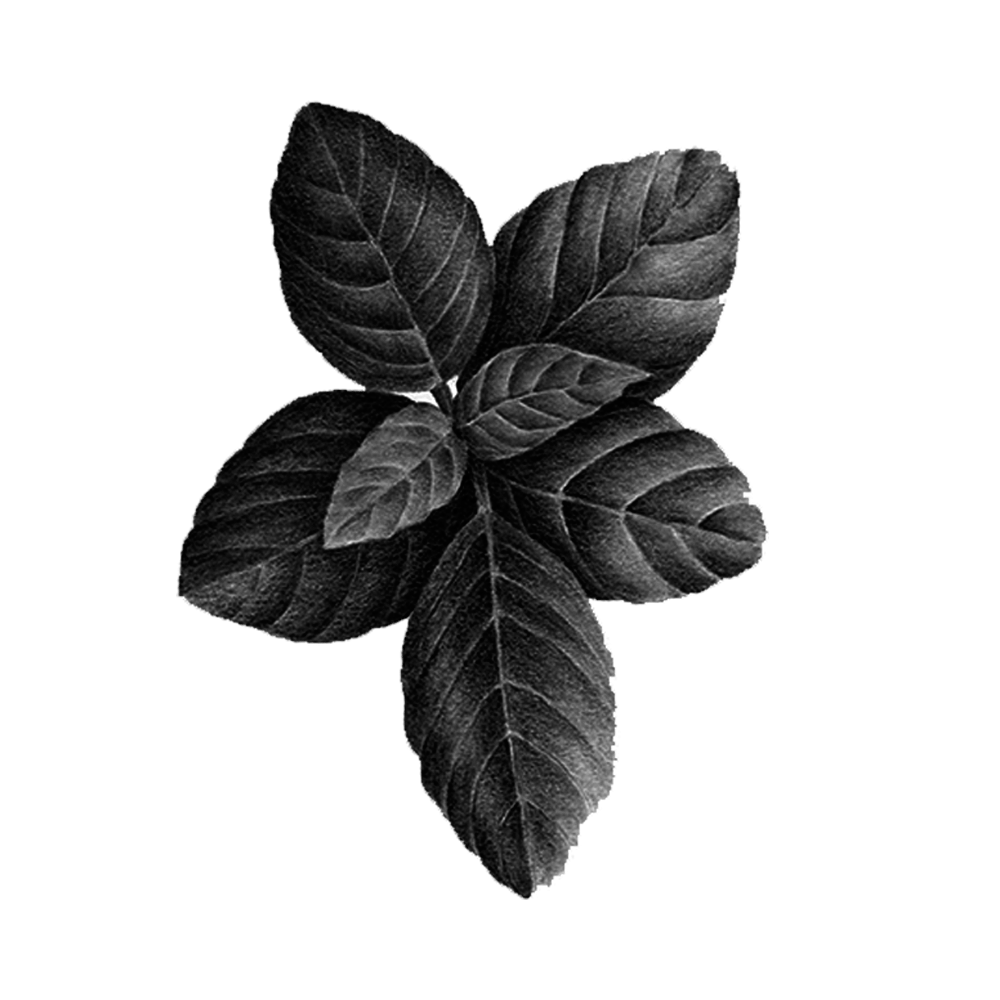
Native to the Arabian Peninsula as well as Iraq, Syria and Lebanon, Rehan (Ocinum Basilicum L) is similar to basil. The leaves and flowers are added to salads and teas for flavour, and oil is extracted from the plant to produce perfume. The plant is also known for its medicinal uses, where leaves are infused in water and used as an expectorant to treat coughs and as a general tonic. Planted between March and April, the seeds can be propagated after two months of flowering.
Harmal
حرمل

Known for its medicinal properties, Harmel (Peganum Nitrariaceae) is used in traditional medicine for muscle pains, diabetes, stomach aches, wounds and cuts. Traditionally, the leaves were also boiled in water to bathe in, which helped relieve rashes and fungus on the skin. Goats also love to eat the flowers and leaves.
Rahel/Qataf
الرغل أو القطف
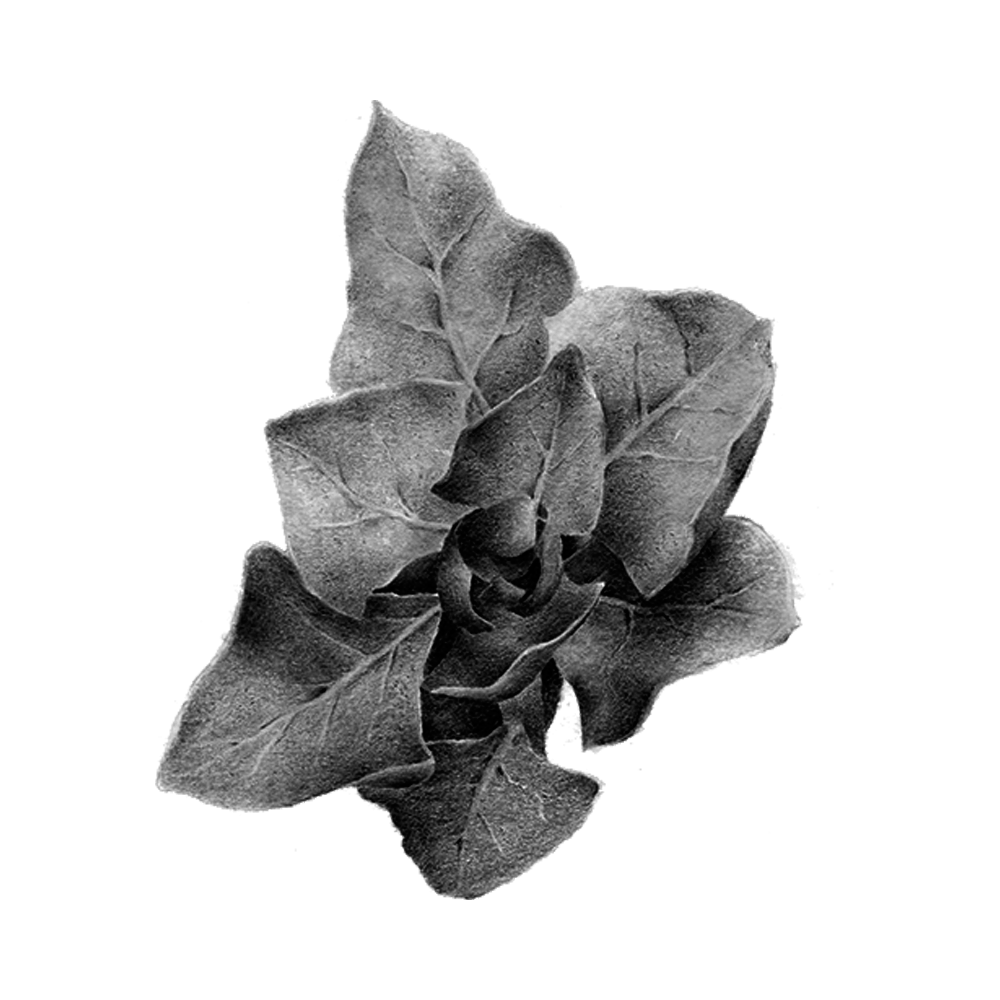
Rahel (Atriplex Halimus) is a unique plant that is naturally salty and used to season salads. It is also widely used as fodder for goats and camels.
Hawa/Safara
حوة أو صفارى
Hawa (launacea arborescens) starts flowering in February. Goats wait eagerly for this time of the year to graze on the delicious flowers and tender branches.
Thamam/Ithmam
ثمام أو إثمام
Thamam (panicum turgidum) seeds were once grinded and mixed with wheat to make bread. Today, goat farmers propagate the seeds and feed them to their animals. A barter economy also existed in the UAE, and the hay produced from Thamam was traded in exchange for wood and coffee.
Zaabal
زعبل
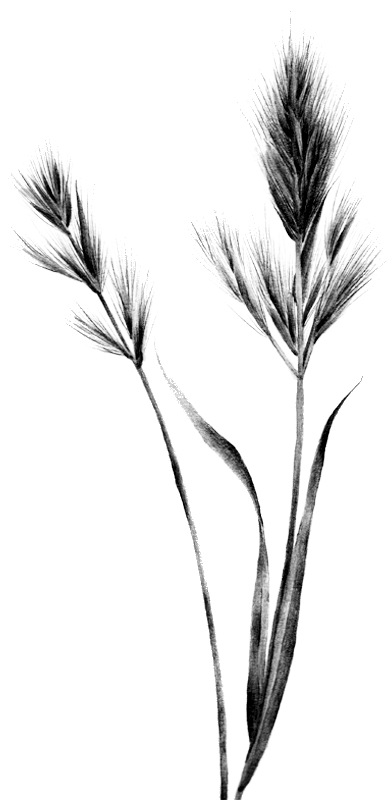
Zaabal (Triraphis pumilio) propagates by self-seeding and has a short lifespan of three months. Mostly found in the Jebel Hafit area, Zaabal is highly grazed by goats in this region, and is now considered a rare grass in the UAE.
Ghurayra/Sleisla
الغريراء أو سليسلا
Ghurayra (Eremobium aegyptiacum) is used in traditional medicine as a laxative and diuretic. This small bush is widespread across the UAE, from gravel plains to wadis, which makes it easy for goats to graze upon the plant.
Safrawi
الصفراوي
Widespread across the coastline of the UAE, Safrawi (Dipterygium Glaucum Cleome Pallida) has the ability to survive in saline sandy soils, and the fruit attracts a huge diversity of migratory birds and grazing animals, including goats. The plant was also used for traditional medicinal purposes, dried and drunk as a tea.
Henna
الخزامىالخزامى
Henna (Lawsoniainermis L) is one of the most commonly used plants in South Asia and many parts of the Arab world with a rich cultural history. The leaves are used to make a red dye that women apply to their hair and skin. Henna is also known for its medicinal and anti-inflammatory properties and was traditionally used as a local anesthetic for treating fever and mouth ulcers. Due to its high economic value, Henna is a widely cultivated plant in the UAE.
Arta/Abal
الأرطى أو العبل
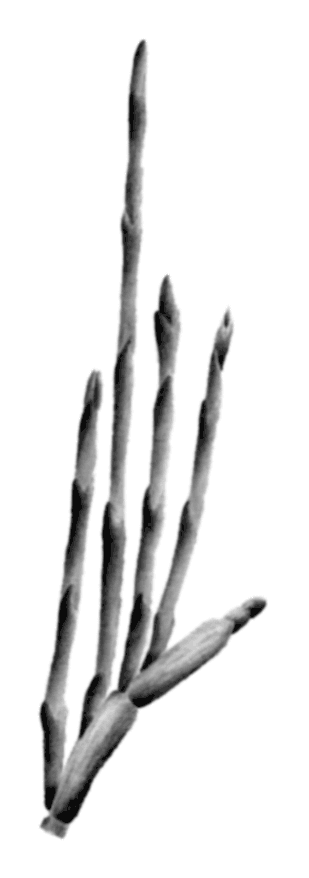
There are two types of Arta (Calligonum comosum), spread between two diverse geographies – the ‘giant’ plant, growing in sandy regions, and the ‘small’ plant (arbi), growing in rocky terrains. Once the plants start flowering in March, people living in mountainous regions of the UAE add its beautiful bright red and yellow flowers, chopped leaves and soft stems into rice as a special dish. It is also during this time of year that the young shoots of the plant are collected and added to salads. The leaves of the plant are also used as a tea to treat diarrhoea, and often dried in the sun and infused in water or fish oil for cooking.
Arfaj
عرفج
Arfaj (Rhanterium epapposum) starts flowering in December. Historically, people ate the tender flowers by picking them off of the plants. Goats thrive on the plant, which nourishes their milk. Today, Arfaj is considered one of the rarest plants in the UAE and is mostly found in the north-eastern part of the country.
